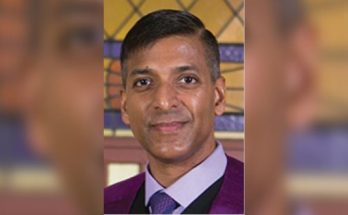Part 2
By José Luis Chagoyán «Hopalong»
This is the continuation of «El Canto de las Sirenas,» a collaboration between the singer Anne Grady and the composer and producer José Luis Chagoyán «Hopalong.» In the previous article published on June 15, I mentioned the different stages of production. Now, let us analyze each of them in detail.
The first thing is the “leitmotif” that gives rise to the piece, which is a harmonic progression in D minor and the melody derived from said harmonic sequence. It is important to mention that it is not a simple circle of chords but a harmonic development in which the lowest note (the bass) and the highest note (the harmonic melody of the guitar) have their own song. A counterpoint is created with the addition of the melody by Grady’s voice. The development of the harmonic progression and its links are the result of years of study in the field of harmonic functions. This progression takes place in 3/4 time, but it doesn’t sound like a waltz. That makes it more ethereal and rhythmically interesting.
Then comes the melodic part, which Chagoyán wrote especially for Grady and shows off her beautiful voice. They went through several sessions discussing the intention, the dynamics, the articulation, and even the appropriate vowels for different passages. The piece is instrumental without any lyrics. The transverse flute, with its counter singing rounds, enhances her voice by subtly contrasting it.
This has been all about the composition and arrangement of the piece, but the production was relatively simpler though no less arduous. Only two musicians were involved: Chagoyán and Grady. He performed and recorded the guitar and flute parts at Hop’s Studio here in San Miguel. He then created the tracks so that Grady could practice and become familiar with the melody.
In 2010, Grady abruptly interrupted her musical career due to a fall that caused a traumatic brain injury. Two years passed before she returned to music, and the path was not easy. She had to learn to read music again and wore sunglasses during rehearsals because of sensitivity to light. After an exhausting rehearsal, she had to go home and sleep for several hours to recover. Over the next two years, her voice improved remarkably and she gained the confidence to continue nurturing her love of singing.
Grady auditioned for the Portland, Maine, ChoralART Choir and was accepted. She was selected to sing Bach’s Mass in B minor, one of the greatest challenges of her life, and was quite successful. Later, while in San Miguel, she recorded «El Canto de las Sirenas.»
She also devoted herself to research on how to improve her hypersensitive vision and be able to read music for long periods of time. This is how she discovered the studies carried out by the Mind Eye Institute, which links optometry with neuroscience in relation to vision and brain injuries. Prisma glasses, which rebuild and develop new brain pathways, dramatically improved her perception and her life in general.
The biggest hurdle for a musical session is playing and recording at the same time, as it means splitting your brain in two. One part of the brain is in charge of the execution, which is demanding, and the other part must ensure the quality of the sound—avoiding saturations, distortions, and external noises. In addition, the placement of the microphones, the settings on the console, the monitoring (playback), and other aspects are also important. In this case, Chagoyán was the songwriter, performer, recording engineer, and producer. Perhaps the most difficult part of this was achieving a perfectly balanced mix. The ear and mind tend to become saturated, either immediately after several hours of recording and mixing, or progressively over days or weeks of preparation. There is a problem in listening to the same thing and losing the right balance between the elements involved such as volumes, panning, effects, editing, silence, and so forth.
There is an additional element in this production. Chagoyán has a chromatic facet with very creative and peculiar photographs (somewhat surreal images). With the help of technology, he managed to combine and integrate them into the audio (Logic) and the video (iMovie) to create the video clip «El Canto de las Sirenas.» This has been uploaded to YouTube and can be seen at: El Canto de las Sirenas.
In this review about a close musical collaboration between Grady and Chagoyán, it is important to emphasize that art should have no limits, especially not economic ones. We must not abandon the inspiration that drives human creativity. Not receiving monetary compensation does not justify the passivity of the artist since that is secondary. The transcendental thing is the commitment with the most genuine form of art—music. This is another reason why San Miguel and its musicians contribute to a better world.
PS: You can subscribe to the channel «José Luis Chagoyán Hopalong» on YouTube for more music and to OPALOCROMA on Instagram to see their photos.




